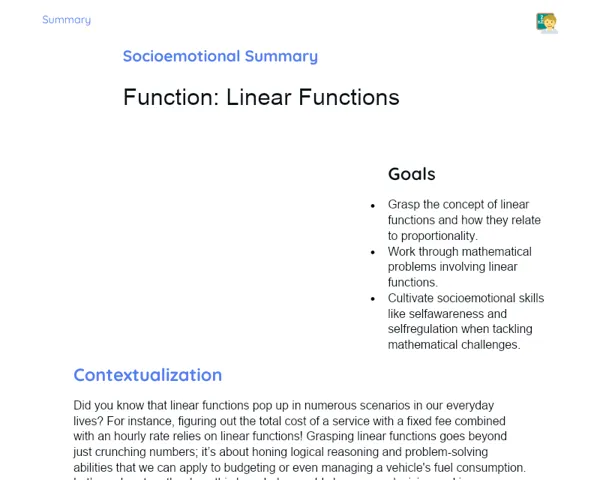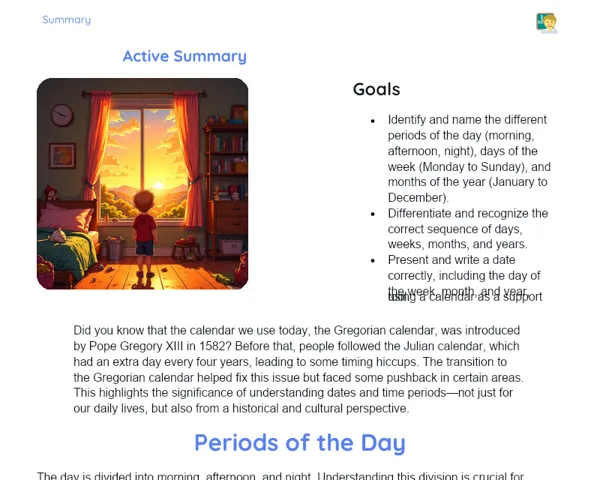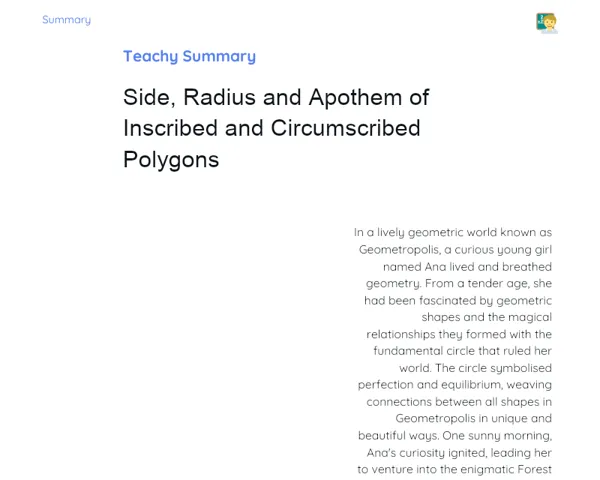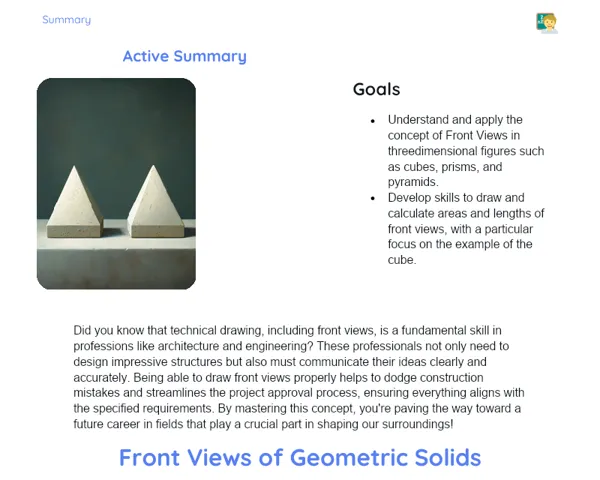Goals
1. Understand and differentiate between ratio and proportion.
2. Solve problems involving the calculation of a ratio.
3. Apply concepts of proportion in practical situations, such as calculating the speed of a car.
Contextualization
Ratios and proportions form the backbone of many everyday activities. From sharing a pizza amongst your mates to figuring out how much sugar you need for a batch of scones, these mathematical ideas are indispensable. They help us grasp how different quantities relate to one another and are incredibly useful in various professions, like architecture, engineering, and economics. For instance, an engineer uses proportions to ensure a bridge stands strong, while a chef tweaks recipes for a full table of guests.
Subject Relevance
To Remember!
Ratio
A ratio compares two numbers, showing how many times one number contains the other. It's expressed as a fraction, like 3/4 or as 3:4.
-
A ratio compares two quantities.
-
It can be written in fraction form or with a colon, like 3/4 or 3:4.
-
It's important to simplify ratios whenever you can; for example, 6:8 simplifies to 3:4.
Proportion
A proportion means that two ratios are equal to each other. For example, if 1/2 = 2/4, then these ratios are in proportion.
-
A proportion shows that two ratios are equal.
-
It can be expressed as an equality between two fractions, like 1/2 = 2/4.
-
It's handy for solving problems where quantities must remain constant in relation to each other.
Speed Calculation
Calculating speed is a practical example of using ratios and proportions. Speed is figured out by dividing the distance travelled by the time taken. For instance, if a car goes 150 km in 2 hours, its speed is 150/2 = 75 km/h.
-
Speed is the ratio of distance travelled to time taken.
-
It can be expressed in various units, like km/h or m/s.
-
This is a practical example of ratios and proportions in everyday life, like figuring out how fast a car is going.
Practical Applications
-
Engineering: Proportions help design safe structures, ensuring that everything is up to scratch and in proportion, like bridges and buildings.
-
Cooking: Chefs adjust recipes using proportions to cater for different numbers of guests, maintaining the taste and consistency.
-
Economics: Analysts rely on proportions to compare economic figures, like a country’s debt to GDP, to make informed decisions.
Key Terms
-
Ratio: A comparison of two numbers, expressed as a fraction or using colons.
-
Proportion: Shows equality between two ratios, indicating they are equivalent.
-
Speed: The ratio of distance travelled to time taken, a practical use of ratios and proportions.
Questions for Reflections
-
How might ratios and proportions be applied in other areas of study that you haven't yet considered?
-
In what ways can understanding ratios and proportions assist in everyday decision-making?
-
How do you think careers that utilise ratios and proportions influence our society and daily existence?
Cooking Proportion Challenge
Let’s put our understanding of ratio and proportion to the test in a cooking-related scenario.
Instructions
-
Pick a simple recipe, like lemonade, that requires specific proportions of ingredients.
-
Write down how much of each ingredient you need to make the recipe for 4 people.
-
Determine how much of each ingredient you'll need for 10 people while keeping the proportions consistent.
-
Compare the two versions of the recipe and check if the ratio of ingredients remains unchanged.
-
Provide a brief summary of how you applied ratios and proportions to modify the recipe.



